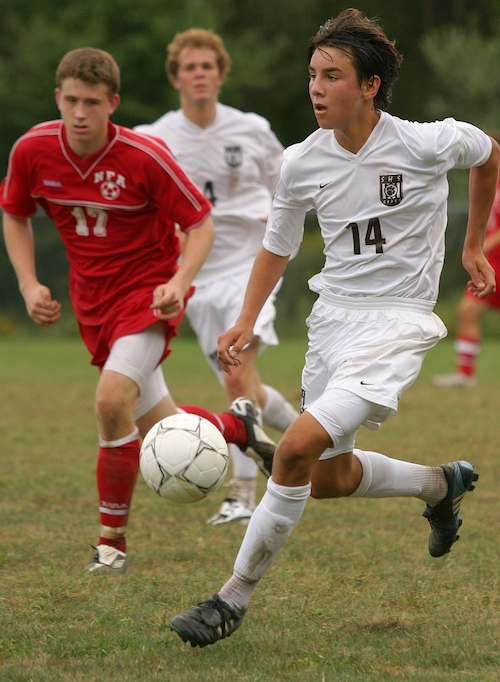The Great Debate: U.S. Soccer Developmental Academy vs. High School Soccer — Why Can’t DA Players Play For Their School?
This is an Op-Ed article by our New York Columnist Randy Vogt
Youth Soccer News: Those reading this headline would probably say that it’s no contest as the soccer played in the U.S. Soccer Developmental Academy is so much better skilled than most high school games. And, I realize that high school soccer has its issues, such as using rules different from the Laws of the Game, with many matches using the antiquated two-referee system and some non-competitive games. If I had a magic wand, I would have three officials enforcing the Laws of the Game in High school soccer and teams would be placed into divisions only by skill level.
But, high school soccer has some great benefits, including it being cost-free.
I officiated high school soccer in Orlando three decades ago and on Long Island for more than a decade, in fact, for the past 13 years. High school games in Florida are played in the winter in football stadiums and I can remember hundreds of people attending just nearly every game.
High school games on Long Island are played in the fall and attendance for many games is quite good, generally more than just the friends and family who attend youth and adult games.
Part of the reason that these high school soccer games are well attended — is that the games are publicized. Nearly all the games I’ve officiated have the box score in a major newspaper the next day, with many matches publicized further by a paragraph too — if not an entire article and with an action photo.
All this publicity builds the confidence of the teenagers playing high school sports.
If they get their name and/or photo in the paper for their play in a game, they will be stopped on the street about this as well as the hallways of the school. You got to be a fútbol hero!
Contrast this with the anonymity of those playing in the Developmental Academy.

After all, when was the last time you read anything about a DA game in the newspaper?
Also, when the DA began, it was supposed to produce professional and US National Team players.
The purpose is still the same but with so many DA clubs, age groups and games today, what happens to the vast majority of players who will never play in a professional stadium? Take a college scholarship I guess, if one is offered, which is obviously not a bad fallback option at all.
I was recently at Mitchel Athletic Complex on Long Island, where the Long Island Rough Riders and WUSA’s New York Power once played. I was there to officiate two games while a Developmental Academy girls game was being played on an adjacent field. The games I was officiating were a junior college women’s game and a boys high school game between two of the top programs on Long Island.
The scores were similar, 3-0 in both my games and 4-0 in the DA game.
The level of play was very different as the junior college women’s game had some good players and some nice moments but the level was well below the DA and high school game, which were tied in skill level in my estimation.
Attendance was different — the DA game had 15 spectators, the junior college game had 50 and the high school match had 200 spectators, friends and family plus classmates of the kids playing.
Another difference was how far the visiting team had traveled:
- 4 miles for the high school team,
- 20 miles for the junior college team and
- 230 miles for the DA team.
The school teams came in buses while the DA team was driven by parents who were spending another weekend on the road.
I believe it was a mistake to take away kids’ opportunity to share their passion with their local community.
The high school season is very short, just 2-3 months, so it seems something could be worked out and the Developmental Academy could have a slightly shorter season to accommodate those wanting to reap the many benefits of high school soccer.
And let me conclude by writing that I’m still very much in touch with a few of my high school teammates, nearly 40 years after graduating.

Randy Vogt, the author of Preventive Officiating, has officiated over 10,000 games and is the Public Relations Director of the Eastern New York Youth Soccer Association (ENYYSA).
Top Image — Editorial credit: Larry St. Pierre / Shutterstock.com






